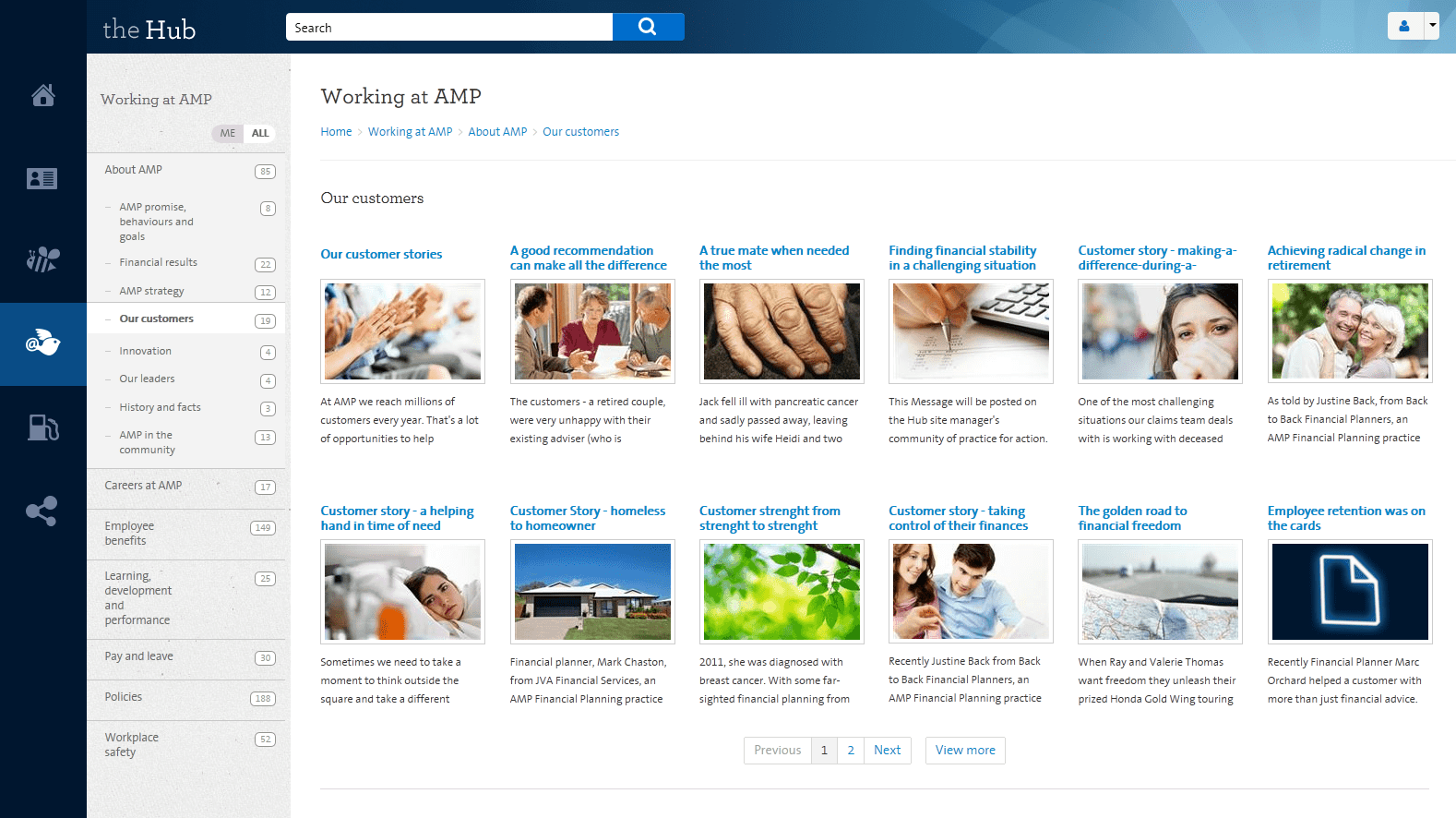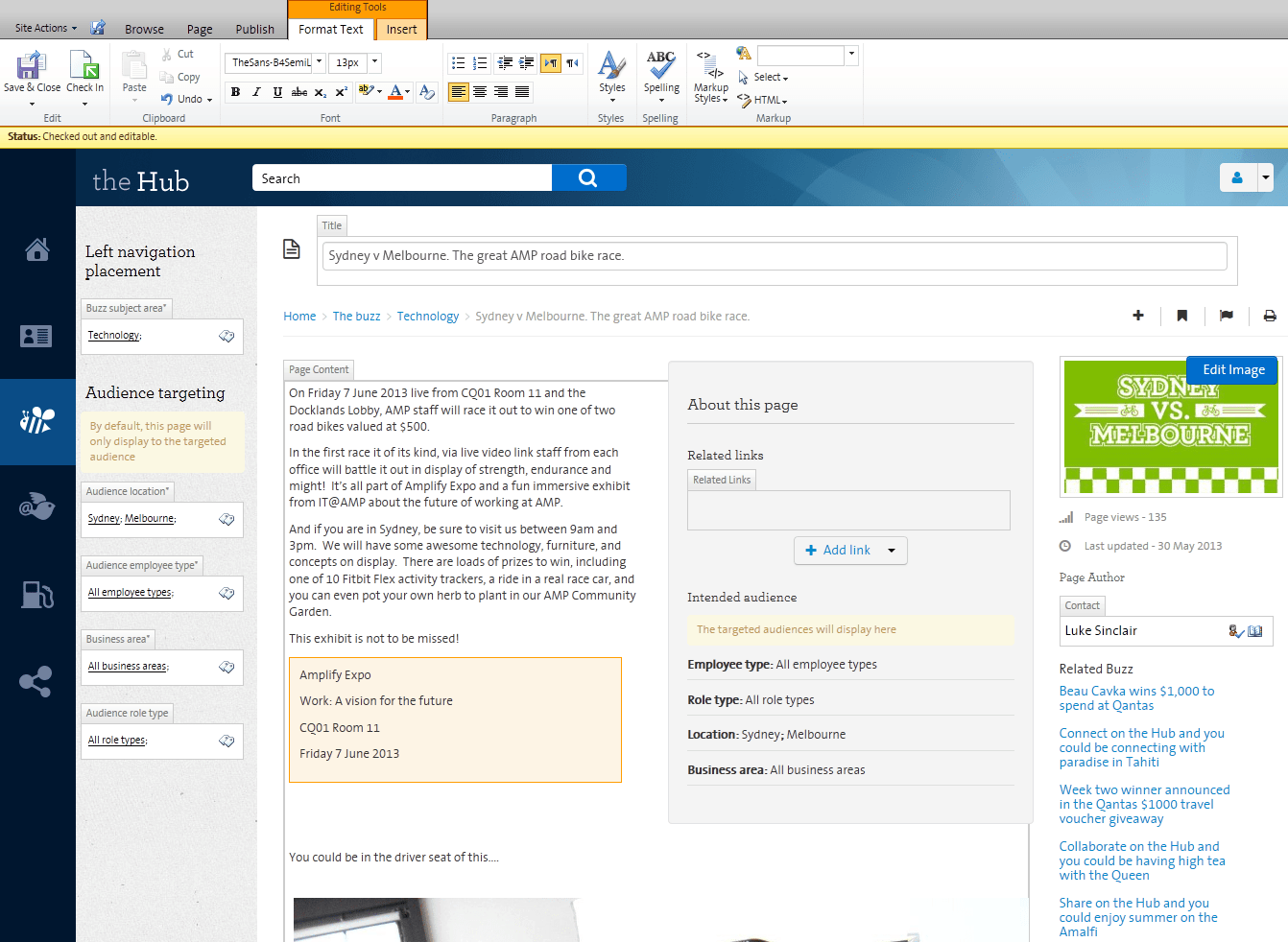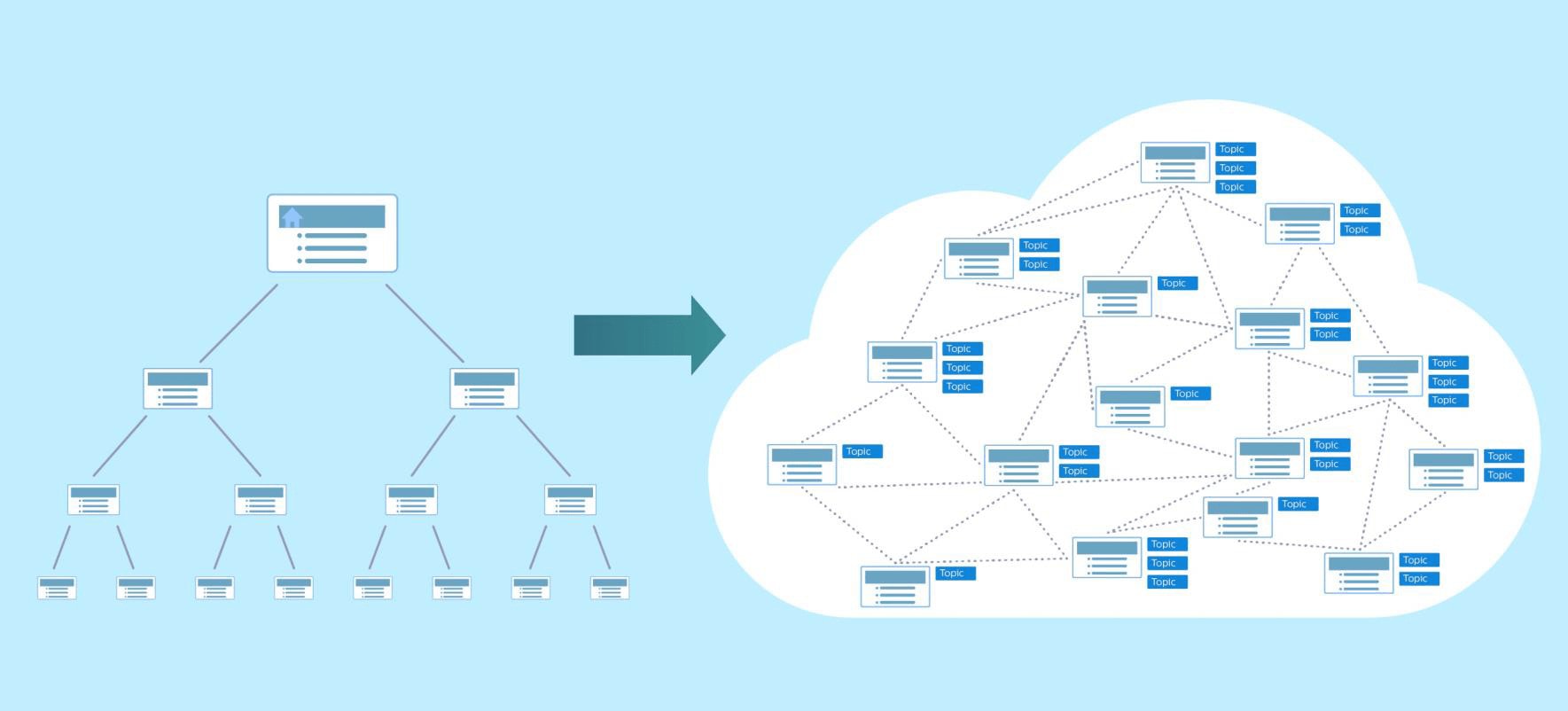
Filed under: Information architecture, Intranets
Let’s face it, managing the navigation and site structure (information architecture) of an intranet is hard. Creating an IA that works for staff is just the first challenge. Beyond that, a decentralised group of authors must keep their corners of the site up to date and well-structured.
The larger the intranet (and the organisation it serves), the harder this gets. It’s all too common for sites to get stuck in the trap of repeated redesigns: a general deterioration of the IA, followed by a restructure, and then the deterioration starts again…
No wonder that some teams are asking: can a traditional, hierarchical navigation structure really be made to work? Or is there a better way?
Introducing post-hierarchical IAs
Intranet innovators around the globe are experimenting with new ways of managing and delivering intranets, including moving away from traditional navigation.
Some of these experiments involve what we call post-hierarchical IAs. That is, information architectures that don’t use a static, tree structure for the site.

AMP’s intranet delivers content according to topic and geographic location. Screenshot courtesy of AMP.
AMP provided an early example of this, using a tag-based and targeted approach to deliver content. Pages were grouped into topics, and then flagged according to geography.
For example, HR information (topic) in Australia (geography). Authors enter relevant tagging when pages are published, and the intranet then dynamically chooses what to serve to the current user.

Authors enter rich metadata (tags) when creating new content items. Screenshot courtesy of AMP.

Rich tagging is used as a key element of intranet search. Screenshot courtesy of Philips.
Phillips provides a more recent example. Again, a tag-based approach is taken, but this time on a global scale. Search is used as one of the main methods for staff to find what they need, driven by the underlying tagging of pages.
In both these cases there’s no static hierarchy, but rather a pool of pages that are delivered according to their tagging.

Philip’s conceptual model for how their new intranet is structured, as a web of relationships rather than a static hierarchy. Image courtesy of Philips.
Three keys to success (two old, one new)
While the technology that underpins these news approaches is relatively simple, it would be a mistake to believe that “content will self-organise” in a way that works for staff (and the intranet team).
Instead, there are several key factors that must come together to ensure that the intranet is successful, two of which apply to all sites, and one that’s specific to post-hierarchical approaches.
The two traditional keys to success:
- Findability. Staff must be able to quickly and confidently find what they need, for common and important tasks. In a post-hierarchical intranet, this includes understanding the basic model or metaphor that the site is using, instead of traditional navigation.
- Sustainability. The publishing model should work for the decentralised authors, and it must be possible to manage the site over time. For post-hierarchical intranets, content owners and publishers must understand how the site works, and the intranet team must be provided with good tools to oversee the evolution of the site.
The extra key for post-hierarchical IAs:
- Predictability. With content dynamically assembled and delivered, based on tagging and user profiles, the intranet user experience may be different for every staff member. To be successful, the intranet team (and key stakeholders) must be confident that the right information will be delivered, and that a complete set of relevant pages will be provided. The more sophisticated (and complex) the underlying intranet model is, the harder this becomes.
We’ve worked with multiple organisations who have moved to a post-hierarchical model for their intranet, and the the requirement for predictability is paramount. Be warned: some difficult thinking will be required at the outset to address this consideration, and it may be necessary to develop additional tools. For example, there will need to be a way of ‘spoofing’ a user, to allow for quick checking of what is presented to a range of users.
Is this the future for all intranets?
Is a post-hierarchical IA powerful? Certainly. Is it simple? No.
Tag-based approaches may be the only way of scaling up to truly meet the needs of large organisations, but they’re no quick fix. The new IA model must be carefully considered and planned, and predictability ensured from the outset.
Over the next few years, best practices will emerge, drawn from the experiences of early adopters and innovators. Watch this space for further insights into making post-hierarchical IAs a success.





